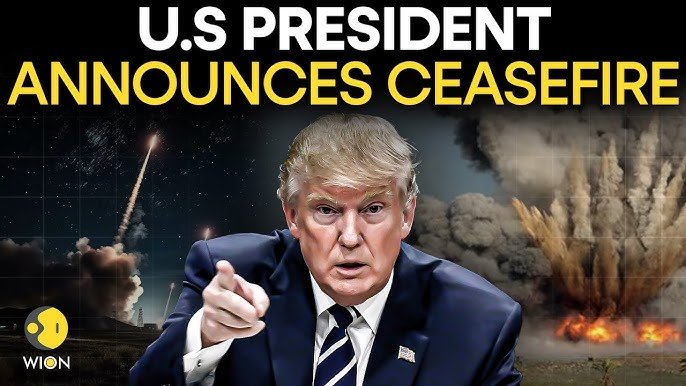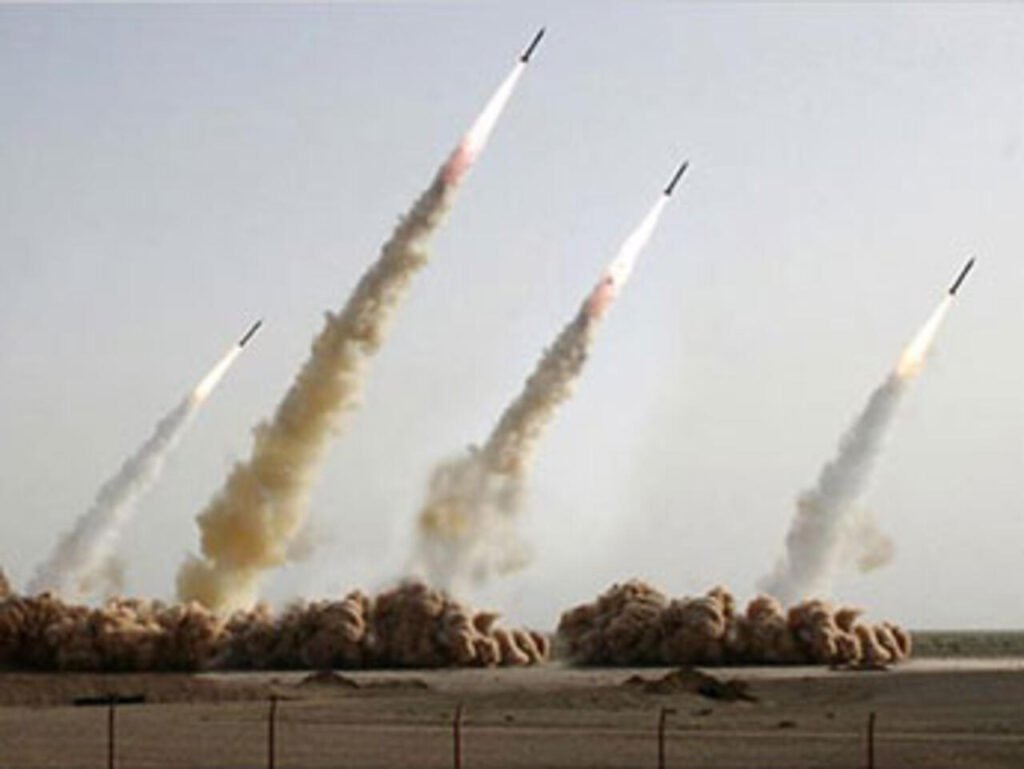In a dramatic turn of events, U.S. President Donald Trump announced Monday that Israel and Iran have agreed to a “complete and total ceasefire” to be implemented over the next 24 hours, potentially ending one of the most dangerous escalations in Middle East tensions in recent years.
Breaking: Trump’s Ceasefire Announcement
U.S. President Donald Trump said on social media Monday that Israel and Iran have agreed to a “complete and total ceasefire” to be phased in over 24 hours. There was no immediate reaction from Israel or Iran to Trump’s ceasefire announcement. The announcement comes as a surprise development after days of intense aerial warfare between the two nations following U.S. strikes on Iranian nuclear facilities.
The ceasefire announcement comes on the heels of a retaliatory strike from Iran on a U.S. airbase in Qatar on Monday. This timing suggests the agreement may have been reached at a critical moment when the conflict threatened to expand beyond bilateral hostilities.

Background to the Ceasefire
The ceasefire follows a week of escalating military exchanges that began after the US “successfully” struck three nuclear sites in Iran, including Fordow, Natanz, and Isfahan. These strikes represented a significant escalation in U.S. involvement in the Israel-Iran conflict, with the United States inserting itself into Israel’s war against Iran.
Iranian officials had previously indicated openness to diplomatic solutions. An official with the Iranian presidency told CNN that diplomacy with Iran can “easily” be started again if US President Donald Trump orders Israel’s leadership to stop striking the country.

Previous Ceasefire Efforts
This announcement follows earlier diplomatic efforts, with French President Emmanuel Macron saying his US counterpart Donald Trump has made an offer for a ceasefire between Israel and Iran during G7 discussions. However, Trump had previously stated he wanted more than just a temporary halt to hostilities.
Trump had previously said his objective in Iran was “an end, a real end, not a ceasefire,” or “giving up entirely.” This shift toward accepting a ceasefire arrangement suggests significant diplomatic pressure or changed circumstances.
Iran’s Diplomatic Isolation
The ceasefire comes as Iran’s leaders are discovering they’re on their own against the US and Israel, without the network of proxies and allies that allowed them to project power in the Middle East and beyond. This isolation may have contributed to Iran’s willingness to accept ceasefire terms.
Iran had called on the U.S. to force a ceasefire in the aerial war, indicating Tehran’s desire to de-escalate the conflict through diplomatic channels rather than continued military confrontation.
Implementation Timeline and Verification
The 24-hour phased implementation timeline suggests both sides are committed to a rapid de-escalation. However, the lack of immediate confirmation from either Israel or Iran raises questions about the agreement’s specifics and verification mechanisms.
The ceasefire’s success will likely depend on clear communication channels between all parties and international oversight to ensure compliance with the agreed terms.
Conclusion
Trump’s announcement of an Israel-Iran ceasefire represents a potentially pivotal moment in Middle East diplomacy. While details remain limited and official confirmations are pending, the agreement could provide a crucial opportunity to step back from the brink of a wider regional conflict that has already claimed numerous lives and threatened global stability.
